Philips 32PFL9705 Review
Philips 32PFL9705
Can Philips justify the high asking price for this 32in LED LCD TV?
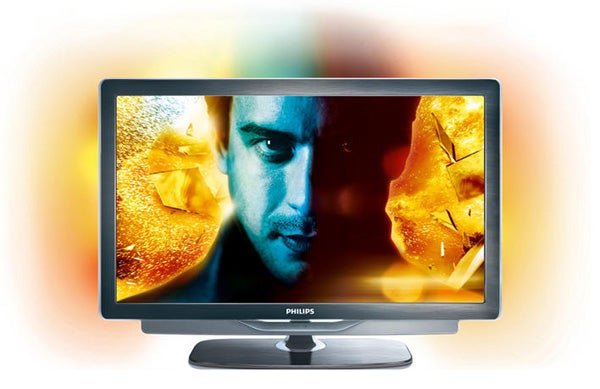
Verdict
Pros
- Incredible picture
- Exceptionally vivid colours
- Great sound
Cons
- No Freeview HD tuner
- Expensive
- No 3D
Key Specifications
- Review Price: £1299.00
- 32-inch 1080p panel
- Direct LED lighting
- Ambilight
- Built-in WiFi, plus DLNA
- Perfect Pixel HD processing
In the current economic climate, releasing a 32in TV costing £1,300 initially looks like utter madness. In fact, there can really be only two justifications for Philips charging so much for the 32PFL9705: either it offers something extraordinary on the design and features front, or else it produces a truly remarkable AV performance. Fair to say it’s got its work cut out, then!
It starts promisingly, though. For while it might not have as much flair as last year’s 9000 series models, it’s still extremely easy on the eye thanks to its exceptionally robust metal stand (which can cleverly fold over to become a wall mount) and polished deep grey bezel, wrapped up in the sort of transparent shroud thingy that’s becoming something of a Philips trademark.
The 32PFL9705 also boasts another more instantly recognisable Philips signature: Ambilight. In the 32PFL9705’s case, you get strips of LED lights on the left, right and top rear edges of the screen that can pump out coloured light in sympathy with the content of the image you’re watching.
As well as making long-term viewing less tiring, Ambilight now echoes the content of the image you’re watching uncannily accurately, in terms both of the tones of the colours produced and the positioning of different colours along the screen’s edges. For instance, if a picture has blue in the top left, red in the top centre and yellow in the top right, that’s exactly what will appear from the Ambilight system.
Be careful not to leave Ambilight set too bright, or it can become a lightshow distraction rather than a subtle, immersive enhancement to your viewing. Otherwise, it remains a feature we’re very fond of. Plus, of course, it sure helps the set stand out from the crowd in just the sort of way a £1,300 32in TV really should.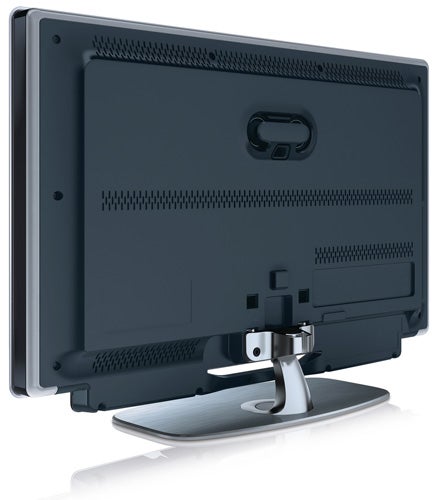
The 32PFL9705 also helps justify its price with its expansive feature count. For starters, it offers full Internet access courtesy of an Opera browser and surprisingly well-implemented text input system. We loved being free of the restrictions imposed by the purely ‘ring-fenced’ content provided by other brands’ online TV services. It’s just a shame Philips refuses to sell an optional wireless keyboard.
If you find the full Web browsing too time-consuming or fiddly, though, Philips also provides a selection of ring-fenced, streamlined content, including Picasa, ScreenDreams (a kind of HD video screensaver site offering pretty nature and artwork streams), DailyMotion, Box Office 365 (a subs-driven platform offering content from ITV and the Cartoon Network), and the inevitable YouTube.
In an ideal world, Philips would have added a few more service providers to this list since debuting its Net TV service last year. But the open Internet access remains a unique selling point.
Given the tendency for online TVs to force you to cough up as much as £100 extra for Wi-Fi dongles, it’s nice to find that the 32PFL9705 has Wi-Fi built in as standard.
This Wi-Fi system can be used, too, for streaming in a huge variety of video, music and photo file formats from suitable, DLNA-ready PCs. Or, in a new feature for 2010, you can actually reproduce your complete PC desktop on the TV. Once you have it working, this is a great way of simplifying PC access for people who struggle to get their heads round more traditional but less intuitive TV/PC interfaces.
We’re not done with the 32PFL9705’s multimedia obsession yet, either. For surprisingly it also allows you to record downloaded video – including HD – to 4GB or 8GB SD cards, and can play back photo, music or video files stored on USB devices courtesy of two USB inputs.
Four HDMIs wrap up the set’s key connections – though surprisingly, only one of these is v1.4 in nature. And that’s only because it offers an audio return channel. Unlike the other sets in the PFL9705 range, this 32in model doesn’t support 3D playback.
The Philips line on this is that it didn’t believe the effect of 3D pictures was strong enough at the 32in size to justify including it. Though at this price, we wouldn’t have minded having the option to decide for ourselves!
The lack of 3D pales compared with the 32PFL9705’s other surprising feature absentee though. For it doesn’t carry a Freeview HD tuner – something we’re already expecting as standard even on sets costing relative peanuts.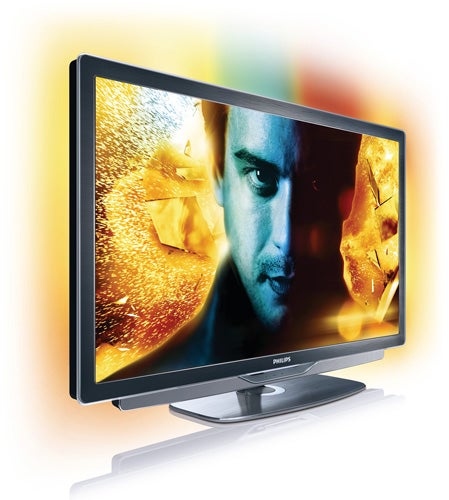
With the lack of 3D and built-in HD tuner suddenly knocking its feature appeal, it’s just as well that we still haven’t covered the two real aces up the 32PFL9705’s sleeve: direct LED lighting and Perfect Pixel HD processing.
Of these, the direct LED lighting is the most intriguing – especially as the system comes complete with local dimming, so the TV can illuminate clusters of LEDs individually of each other. This potential for having deep blacks and bright whites appearing simultaneously within a single frame in a way not possible with other types of LCD illumination predictably results in a huge claimed a contrast ratio of 5,000,000:1. This is comfortably the highest contrast ratio we’ve seen on a 32in TV, and actually matches the number put out by Panasonic in relation to its latest plasma TVs.
Perfect Pixel HD, as regular readers will know, is the name Philips gives to its own ridiculously powerful picture processing engine. This engine has proved controversial in the past, with some people feeling that it overcomplicates Philips TVs while also causing pictures to look over-processed. But while we would agree that you have to work harder to get the best out of Philips TVs because of Perfect Pixel HD, we would also say that provided you put the effort in, the processing has historically proved capable of turning out some outstanding results. 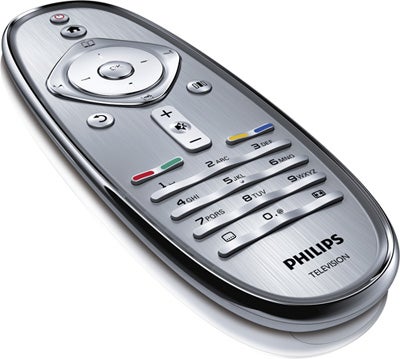
In fact, it’s blindingly obvious right away that Perfect Pixel HD processing in conjunction with the direct LED lighting system really does work wonders. Actually, the 32PFL9705’s picture is so aggressively commanding that – unusually for a TV of any size, never mind a ‘mere’ 32in one – no less than three different strengths immediately vie for our attention.
First up, there’s the screen’s truly immense contrast performance. This finds extremely bright, pure whites able to share the screen with the best black colours we’ve ever seen on a 32in flat TV.
Obviously, that’s a pretty big statement to make. But we stick by it. We just have not seen a 32in LCD or plasma TV before that gets rid of the usual LCD grey clouding issue with dark colours as successfully as the 32PFL9705.
What’s more, the 32PFL9705 achieves this without sacrificing as much shadow detail as local dimming LED TVs generally do. Nor (unless you watch from an angle of 40 degrees or more) is there any significant trouble from local dimming LED’s haloing issue, where you can see greyish haloes around very bright objects when they appear against dark backgrounds.
The 32PFL9705’s colours, meanwhile, are so bright and richly saturated that they initially take some getting used to. But this isn’t a fault of the 32PFL9705 – just a result of the tones of most rival 32in TVs looking drab by comparison.
The colours don’t become so aggressive that they make video footage look unnaturally cartoonish, mind, and nor do the aggressive saturations come at the expense of subtlety when it comes to portraying the sort of fine colour shifts that help give pictures solidity and depth.
The 32PFL9705’s sharpness, meanwhile, is startling in three different ways. First, the set’s ability to reproduce every pixel of picture information with a high definition source is mesmerising, totally disproving the theory we sometimes hear that you can’t really appreciate HD on screens as small as 32in.
Next, the 32PFL9705 proves exceptionally accomplished at upscaling standard definition, throwing in so much extra detail – while also managing to suppress video noise – that the results look at least halfway to being high definition. Outstanding.
Our final sharpness ‘hit’ concerns the 32PFL9705’s motion handing. The usual LCD problems with motion blur and judder just do not appear if you have both the set’s 200Hz and HD Natural Motion tools in play. What’s more, provided you stick with the Natural Motion system’s minimum or, just possibly, medium settings, the judder-reduction and motion clarity are delivered without generating the usual motion processing artefacts.
Some people will never like the sort of heavy duty motion processing offered by the 32PFL9705. But if you’re one of these people, you can always just turn the processing off without damaging the other picture enhancements. In fact, Philips provides the flexibility to turn off, down or up pretty much any element of its processing engine.
Actually it’s arguably been a bit too helpful in this respect. For as noted earlier, as with many Philips TVs before it, you do need to commit to learning your way round and regularly revisiting the 32PFL9705’s onscreen menus to ensure the picture always looks its best with different source material. 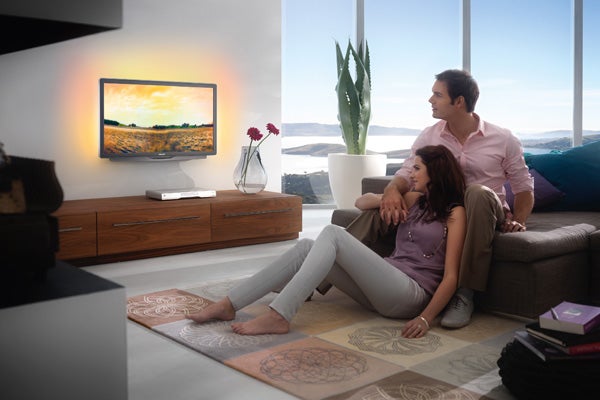
For instance, if you’re watching something extremely bright and colourful, like Toy Story or Shrek, you might well spot shifting patches of brightness around some of the objects in the picture, caused by the machinations of the local dimming. Unless, that is, you turn the set’s Dynamic Backlight option to Standard or even off, rather than using the Best For Picture mode that arguably delivers the best results with less colourful material.
Similarly, if you set the set’s Perfect Contrast option too high, it can cause pictures to look flickery, as the brightness adjusts too aggressively to changes in the image you’re watching.
While it might be nice if Philips’ colossal processing brain could now react a little more intelligently to these sort of issues itself, we should say that the quality and power of the picture processing engine is now such that unwanted side effects are far less likely to appear than they used to, reducing the number of times when you might need to tweak things.
Plus, of course, the results of your efforts will be truly stunning picture quality. And there can’t be much a better motivation for many of our readers than that.
As with last year’s 9000 series, the 32PFL9705 isn’t just about tip top picture quality, though. It also goes the extra mile to partner those stellar pictures with some unusually enjoyable sound quality. Bass levels are far more potent and deep than they are with any other 32 TV we can think of bar, perhaps, premium brands like Loewe and B&O. Yet bass never sounds overwhelming, thanks to an open-sounding mid-range and plenty of treble clarity.
Philips’ trick for making this level of audio performance possible on the 9000 series is to separate out its woofer and tweeter speakers, siting the woofers on the rear so that they can pump up the bass volume without compromising the sound coming from the dome tweeters on the set’s front. Given how successful this approach is, it’s surprising other brands haven’t nicked the idea yet.
Verdict
Despite the aggravatingly absent Freeview HD tuner, by combining its powerful picture processing engine with some startling new local dimming direct LED finesse, Philips has set a new performance benchmark for the 32in TV marketplace. Admittedly it’s a benchmark most people probably won’t be able to afford, but at least the price is justified.
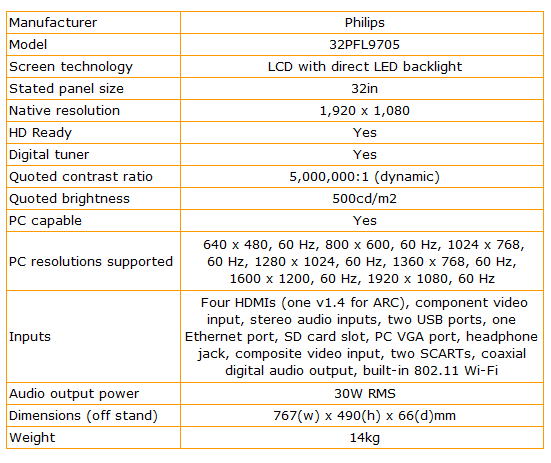
How we test televisions
We test every TV we review thoroughly over an extended period of time. We use industry standard tests to compare features properly. We’ll always tell you what we find. We never, ever, accept money to review a product.
Trusted Score
Score in detail
-
Features 9
-
Value 8
-
Image Quality 10
-
Design 9
-
Sound Quality 9
Features
| Size (Inch) | 32in |
| Display Type | LED |
| Max. Resolution | 1920 x 1080 |
| Digital Tuner | DVB-C (MPEG4), DVB-T (MPEG4) |
| Contrast Ratio | 5000000:1 |
| Refresh Rate (Hertz) | 100Hz |
Connectivity
| HDMI | HDMI 1.4 |
Physical Specifications
| Height (Millimeter) | 526mm |
| Width (Millimeter) | 767mm |
| Depth (Millimeter) | 66mm |
| Weight (Gram) | 16g |

